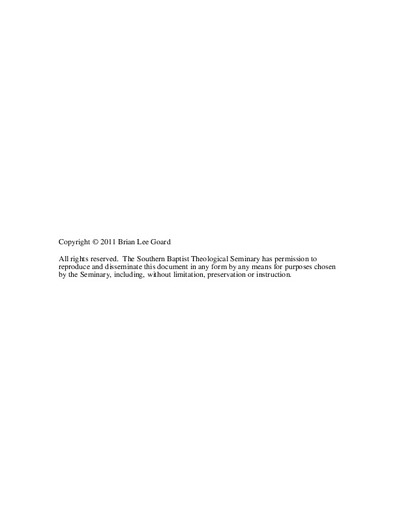Theology and Reality: Critical Realism in the Thought of Alister E. McGrath
Abstract
Brian Lee Goard, Ph.D.
The Southern Baptist Theological Seminary, 2011
Chairperson: Dr. Gregg R. Allison
This dissertation examines the role of critical realism in the theological method of Alister E. McGrath. The thesis of the dissertation is that Alister McGrath uses critical realism in a way that strengthens his theological method and that serves a number of good theological ends, yet McGrath's methodology is in need of revision in some areas, and clarification in others, if it is going to be theologically acceptable.
Chapter 1 introduces (1) the philosophy of critical realism, (2) Alister McGrath's work in theological method, and (3) the thesis and methodology of the dissertation. Chapter 2 examines the history and development of critical realism, beginning with the work of Roy Wood Sellars in the early twentieth century and concluding with a description of critical realism as developed by Roy Bhaskar. Chapter 2 argues that historically, critical realism has been a versatile method that can be applied to a variety of projects and disciplines. Chapter 3 delineates the main themes of McGrath's methodology and how critical realism affects those areas. Specific points addressed in this chapter include McGrath's prolonged engagement with other theological methodologies (chief among them being postliberalism), the concept of nature, natural theology, and the science-theology dialogue. Chapter 4 provides a critical evaluation of McGrath's use of critical realism. A number of positive conclusions about McGrath's use of critical realism are drawn, yet where McGrath has made problematic or underdeveloped applications of critical realism, both correction and suggestions for further development are offered. Finally, chapter 5 reviews the thesis of the dissertation and considers the method that has been taken in defense of that thesis. Specifically, it demonstrates how each of the previous chapters serve as evidence for the dissertation's thesis.

